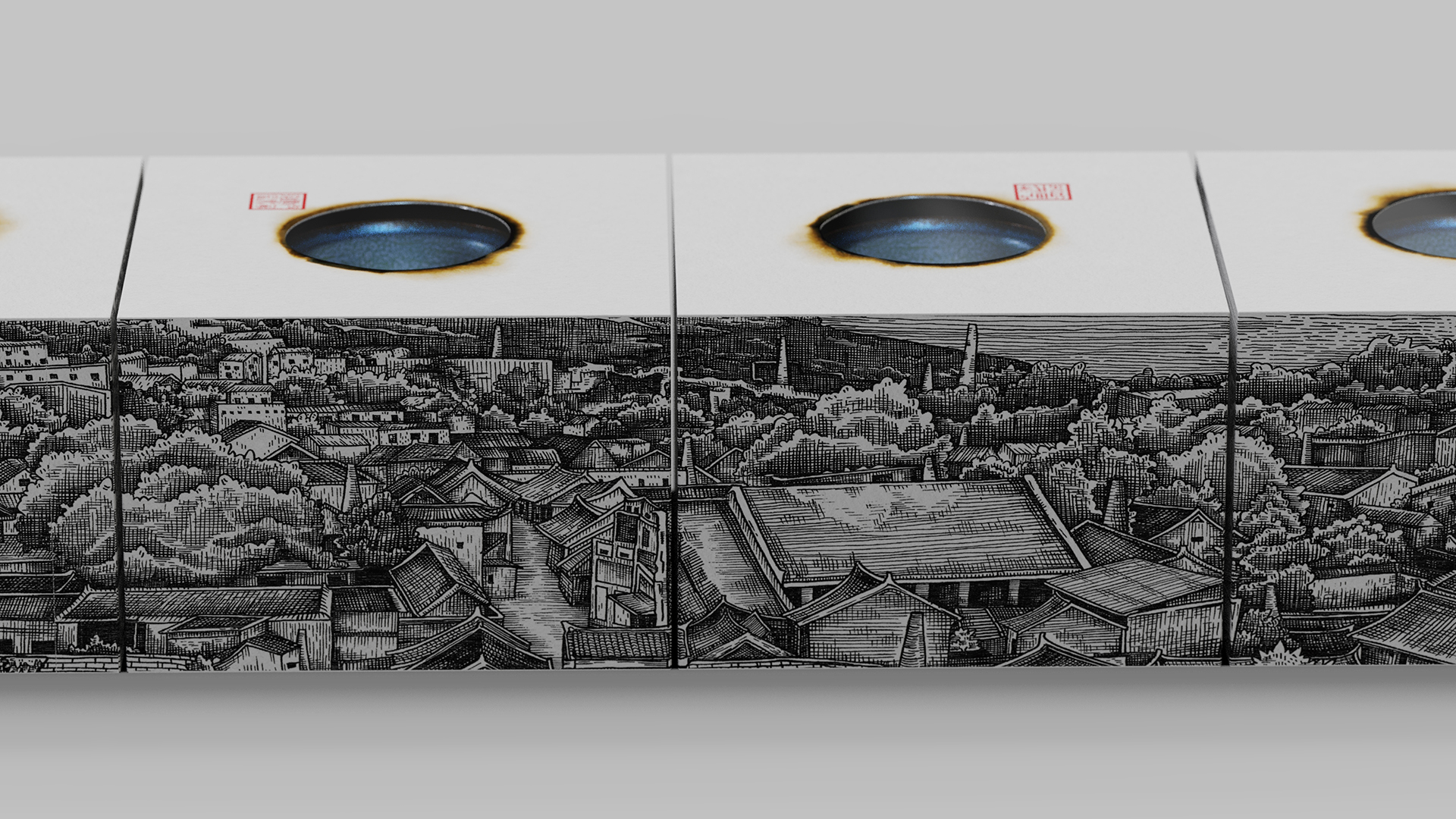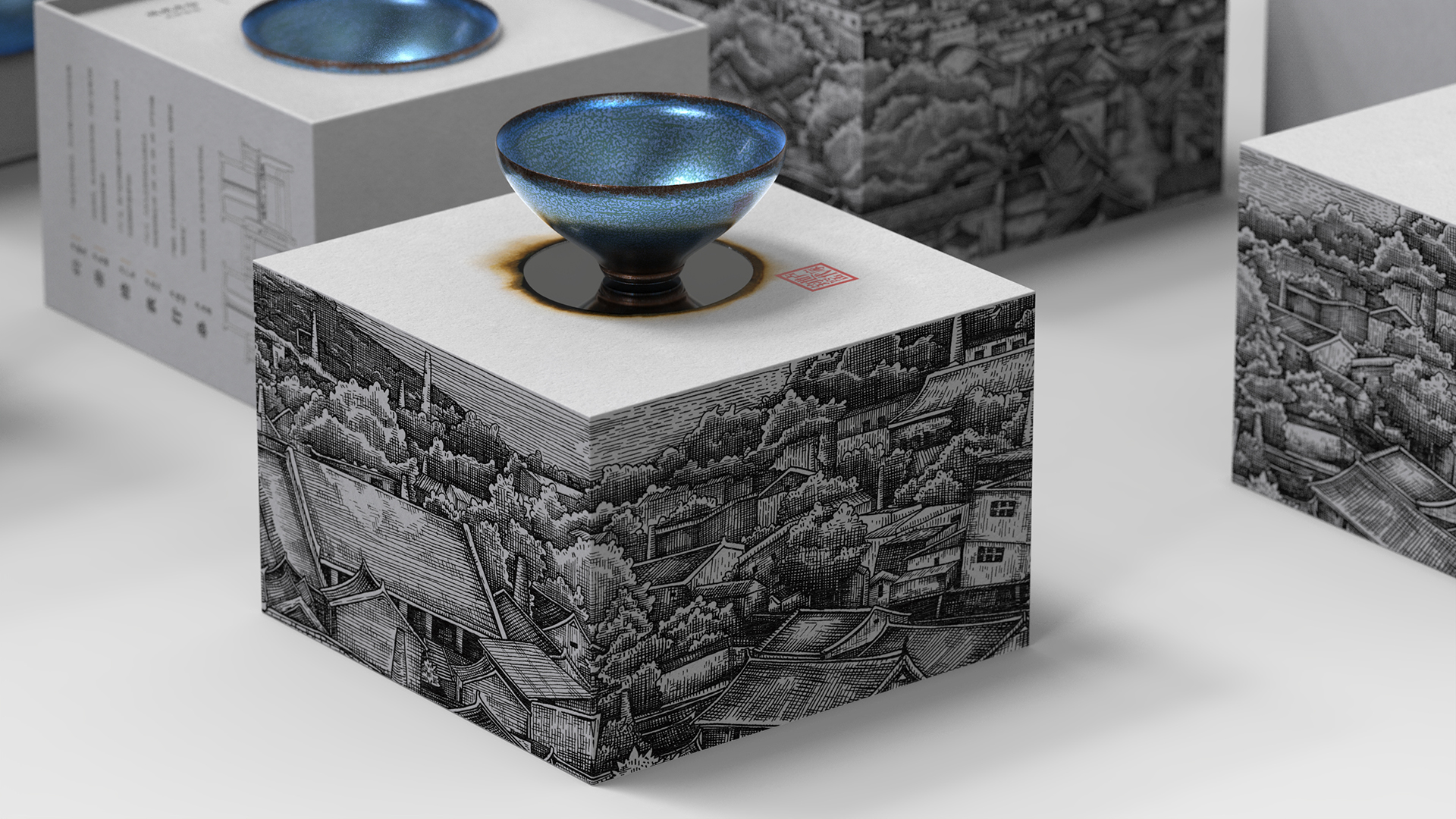作品:卢家柴窑茶杯包装
服务客户:卢家世代钧窑
品牌:卢家世代
原创设计:高琛
插画设计:代丽华
荣获奖项:日本IDPA AWARD 2022 银奖
神垕古镇——活着的古镇,位于伏牛山余脉上,俯瞰华中平原,处于淮河水系的末端,水运转陆运的集散地,大批商贾云集,南来北往,曾经在历史上发挥了重要作用,遗留下众多古建筑群落。因出产高岭土,在古中国瓷器历史上,有着举足轻重的地位。
镇上明清建筑比比皆是,烟囱林立,窑口和街铺纵横交错,卢家钧瓷即位于此。卢家的历史能追溯到清朝年间,卢家钧瓷的第一代先祖在宋钧断烧数百年之后,利用风箱小窑炉成功烧成仿宋窑变钧瓷,使失传数百年之后的钧瓷重现于世。而后新中国成立,卢家第三代掌门人卢广文将卢家钧釉配方无偿捐献给国家,奠定了新时代钧瓷烧制的繁盛局面。
中国五大名窑中(钧汝官哥定),数钧窑烧造温度最高(1300度左右),我们将“温度”作为创意的关键词,既是烧制的物理温度,又是文明传承的温度。
包装正面的火烧痕迹,直观的给观众带来钧瓷烧造过程中的体验感,感受物理与化学变化最终定格为美学的成型过程。同时又能感受古老文明在穿越战乱、动荡、复兴、历经数代传承留下的余温。
High-temperature kiln firing is key to ceramics-making. Among the five famous kilns in China, the firing temperature of Jun ware is the highest, up to 1,300 degrees. Therefore, the packaging concept for this porcelain bowl recreates the high-temperature firing process. The front of the package simulates the marks of the fired paper, and allows users to perceive the molding process of this aesthetic work, which has gone through both physical and chemical changes. The square-shaped stamp adds a sense of history. The illustrations on the outer packaging are intended to depict and reproduce the ancient town of Shenhou, the capital of Jun ware in China..The modern graphic design style renders a distinctive visual identity and a sense of history. Also, the package can form a long scroll image, making it recognizable and eye-catching on the shelf.





















